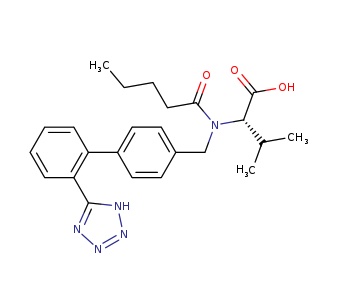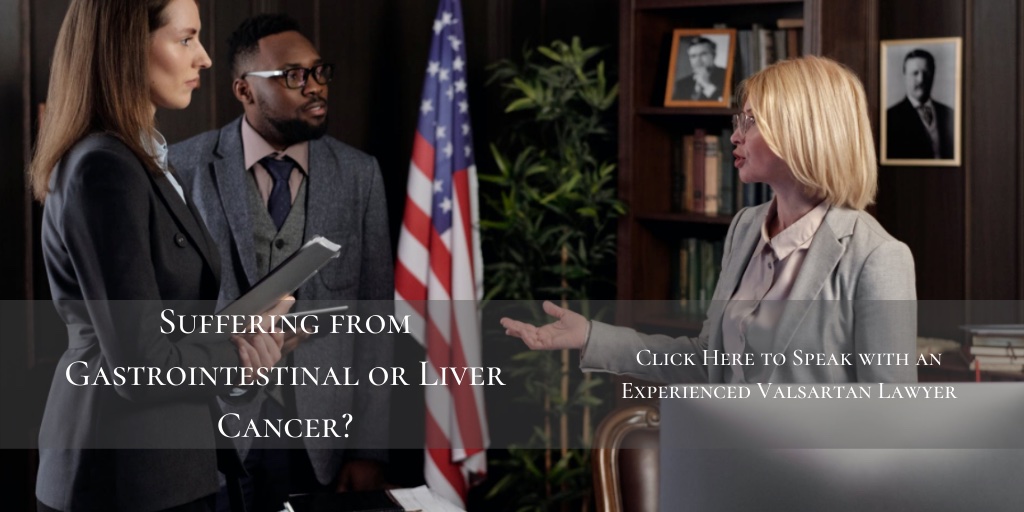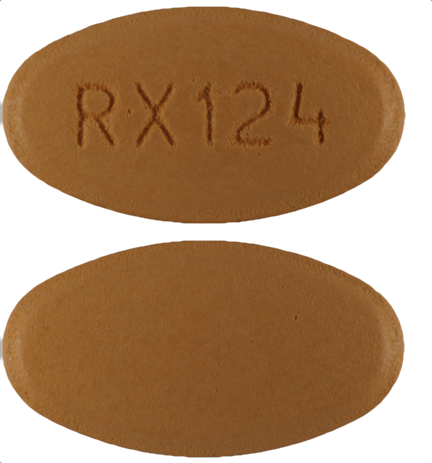Prescription Name and Overview
Valsartan is an anti-hypertensive drug and part of a class known as Angiotensin II Receptor Blockers (“ARBs”) that is marketed in the United States primarily as Diovan. However, there are a range of other generic varieties available as well. It can be used alone or in conjunction with other medications to combat high blood pressure and hypertension, as well as aid in recuperation following a heart attack episode. Valsartan can also be used as a treatment therapy to help forestall the onset of end-stage kidney disease in patients suffering from type-2 diabetes.
ARBs like Valsartan have been in wide use since the 1990s and have gained acceptance in the medical community. However, once Valsartan became available for generic labeling, drug manufacturers made a fateful decision to move production to cities in China and India. That decision resulted in several varieties of generic valsartan becoming the subject of recalls and litigation for contamination with deadly carcinogens.
Generic Name and Overview
Valsartan is the generic name for an ARB medication frequently marketed in the United States under the brand names Diovan and Prexxartan.
Manufacturer and Labeling Overview
Diovan (Valsartan)
Novartis AG
Prexxartan (Valsartan)
Carmel Biosciences, Inc.
|
Manufacturer/Outsourced API |
Location |
| Zhejiang Huahai Pharmaceutical Company, Ltd. | Linhai, Zhejiang, China |
| Teva Pharmaceuticals, USA | North Wales, Pennsylvania |
| Teva Pharmaceutical Industries, Ltd. | Petah Tikva, Israel |
| Torrent Pharmaceuticals | Ahmedabad, India |
| Prinston Pharmaceutical, Inc. | Cranbury, New Jersey |
| Solco Healthcare, U.S., LLC | Libertyville, Illinois |
| Actavis, LLC | Parsippany, New Jersey |
| Major Pharmaceuticals, Inc. | Livonia, Michigan |
| A-S Medication Solutions, LLC | Libertyville, Illinois |
| NuCare Pharmaceuticals, Inc. | Orange, California |
| Bryant Ranch Prepack, Inc. | Burbank, California |
| Zhejiang Tianyu Pharmaceutical Co. | Zhejiang, China |
| Hetero Labs, Ltd. | Telangana, India |
| Mylan Laboratories Limited | Hyderabad, India |
Labeled Indications
Valsartan is approved by the U.S. Food and Drug Administration (FDA) to treat the following conditions:
- High blood pressure in adults and children six years of age or older
- Heart failure
- Diabetic nephropathy (kidney disease)
Typical Dosages
Heart Failure
- Initial Dose: 40mg/2x Daily
- Maintenance Dose: 80-160mg/1x Daily
Hypertension
- Initial Dose: 80 to 160mg/1x Daily
- Maintenance Dose: 80-320mg/1x Daily
Myocardial Infarction
- Initial Dose: 20mg/2x Daily
- Maintenance Dose: Adjusted in accordance with patient reaction.
What Is It Used For?
Valsartan is a prescription ARB medication that is used primarily to treat hypertension and high blood pressure, as well as help patients recover from heart attack episodes. In some cases, Valsartan can also be prescribed to address issues with impending renal failure in patients suffering from type 2 diabetes.
How Does It Work?
Angiotensin is formed in the bloodstream through the action of Angiotensin-Converting Enzyme (ACE). It is a powerful chemical that attaches primarily to smooth muscle tissue in blood vessels causing them to constrict (vasoconstriction). This constriction, in turn, causes an increase in blood pressure. ARBs like Valsartan block angiotensin receptors on the muscle tissue, thereby allowing the vessels to dilate and alleviate hypertension.
What Are the Approved Uses?
Valsartan was developed primarily for the treatment of high blood pressure (hypertension) and to aid in recovery following a heart failure episode. However, it has also been prescribed for patients suffering from kidney disease/renal failure associated with type-2 diabetes.
Production Anecdotes/History
In the 1970s, scientists began studying in earnest and observing the adverse impact of high angiotensin and vasoconstriction tied to the risk of myocardial infarction and stroke. Later in that decade, the first Angiotensin-Converting Enzyme (ACE) inhibitors were introduced. In the 1980s, scientists and drug manufacturers began rolling out the first ARBs such as Losartan. The ARB known as Valsartan was developed and introduced by Novartis AG in 1990 and gained FDA approval in 1996 under the brand name Diovan. It currently holds the largest market share for ARB’s of its kind in the world.
Precautions
Valsartan contains a “box warning” concerning use during pregnancy. In particular, ARB drugs, such as Valsartan, which affect the renin-angiotensin regulating system in the human body can have serious side effects on an unborn fetus if taken during the second or third trimester.
Long-Term Use Considerations
Valsartan does have some side effects associated with its use. Patients should advise their doctor if they experience any of the following symptoms with severity and/or other time:
- Swelling of the face, throat, tongue, lips, eyes, hands, feet, ankles, or lower legs
- Hoarseness
- Difficulty breathing or swallowing
- Unexplained weight gain
- Headache
- Excessive tiredness
- Nausea
- Diarrhea
- Stomach pain
- Back pain
- Joint pain
- Blurry vision
- Cough
- Rash
Drug Interactions
Patients taking Valsartan should always consult their prescribing physician for a full list of all possible drug and over-the-counter medications that could interact adversely with Valsartan. Some of the products suspected or known to interact with Valsartan include:
- ACE Inhibitors (benazepril/lisinopril)
- Birth Control Pills Containing Drospirenone
- Any OTC Medications Impacting Blood Pressure
- Lithium
- Aliskiren

FDA Warnings
In July 2018, the FDA announced voluntary recalls on a range of ARB products, including certain batches of generic brands of Valsartan. Upon testing in the United States and Europe, it was discovered that these batches of Valsartan contained chemicals known as nitrosamines. In particular, the initial discovery uncovered contamination with N-Nitrosodimethylamine (also known as “NDMA”) – a potent carcinogen. Testing also confirmed similar contamination in batches of other ARB drugs like Lorsartan and Irbesartan. In September 2018, the European Medicines Agency (EMA) and the FDA announced that they had discovered amounts of another potent carcinogen N-Nitrosodiethylamine (NDEA) in certain ARB batches. A complete and updated list of recalled ARBs can be accessed on the FDA’s own website.
The sources of contamination were traced to factories in Zhejiang, China, and Telangana, India, where it is believed that improper manufacturing processes created the environment for NDMA and NDEA to form as a byproduct in the drugs. The factories in question were outsourced by U.S., European, and Israeli drug conglomerates to maximize the profitability of generic Valsartan brands with little monitoring or oversight for quality and safety. In some cases, it is suspected that the large drug firms were willfully or recklessly cavalier about known quality control issues at these plants. As a consequence, the contaminated ingredients made their way through the supply chain and into batches circulated throughout the United States, Canada, and Europe before detection.
Lawsuits
Numerous lawsuits have been filed across the United States alleging that the manufacturers of the recalled Valsartan batches knew or should have known of the NDMA and NDEA contamination going back to at least 2012 and that they failed to warn patients and doctors about it. These claims are now consolidated into multidistrict litigation in federal court in New Jersey (MDL-2875).
Sources Cited (13)
- Valsartan: Oral Route” https://www.mayoclinic.org/drugs-supplements/valsartan-oral-route/description/drg-20067355#:~:text=Valsartan%20is%20an%20angiotensin%20II,and%20oxygen%20to%20the%20heart.
2. “Valsartan” https://www.sciencedirect.com/topics/medicine-and-dentistry/valsartan
3. “Overview of clinical use and side effect profile of valsartan in Chinese hypertensive patients” https://www.ncbi.nlm.nih.gov/pmc/articles/PMC3883632/
4. “Valsartan” https://www.nhs.uk/medicines/valsartan/#:~:text=1.-,About%20valsartan,is%20only%20available%20on%20prescription.
5. “Valsartan: What Is Its Mechanism of Action?” https://www.medicinenet.com/valsartan/article.htm#what_is_valsartan_and_how_does_it_work_mechanism_of_action
6. “Valsartan” https://medlineplus.gov/druginfo/meds/a697015.html
7. “FDA approves a new generic valsartan” https://www.fda.gov/news-events/press-announcements/fda-approves-new-generic-valsartan
8. “FDA Updates and Press Announcements on Angiotensin II Receptor Blocker (ARB) Recalls (Valsartan, Losartan, and Irbesartan)” https://www.fda.gov/drugs/drug-safety-and-availability/fda-updates-and-press-announcements-angiotensin-ii-receptor-blocker-arb-recalls-valsartan-losartan
9. “Search List of Recalled Angiotensin II Receptor Blockers (ARBs) including Valsartan, Losartan and Irbesartan” https://www.fda.gov/drugs/drug-safety-and-availability/search-list-recalled-angiotensin-ii-receptor-blockers-arbs-including-valsartan-losartan-and
10. “Transcript: Angiotensin II Receptor Blockers (ARBs) – A Message for Patients” https://www.fda.gov/drugs/drug-safety-and-availability/transcript-angiotensin-ii-receptor-blockers-arbs-message-patients
11. “Diovan (Valsartan)” https://www.centerwatch.com/directories/1067-fda-approved-drugs/listing/3398-diovan-valsartan
12. “Diovan-Tablet” https://dailymed.nlm.nih.gov/dailymed/lookup.cfm?setid=5ddba454-f3e6-43c2-a7a6-58365d297213
13. “Valsartan recall: global regulatory overview and future challenges” https://www.ncbi.nlm.nih.gov/pmc/articles/PMC6351967/



